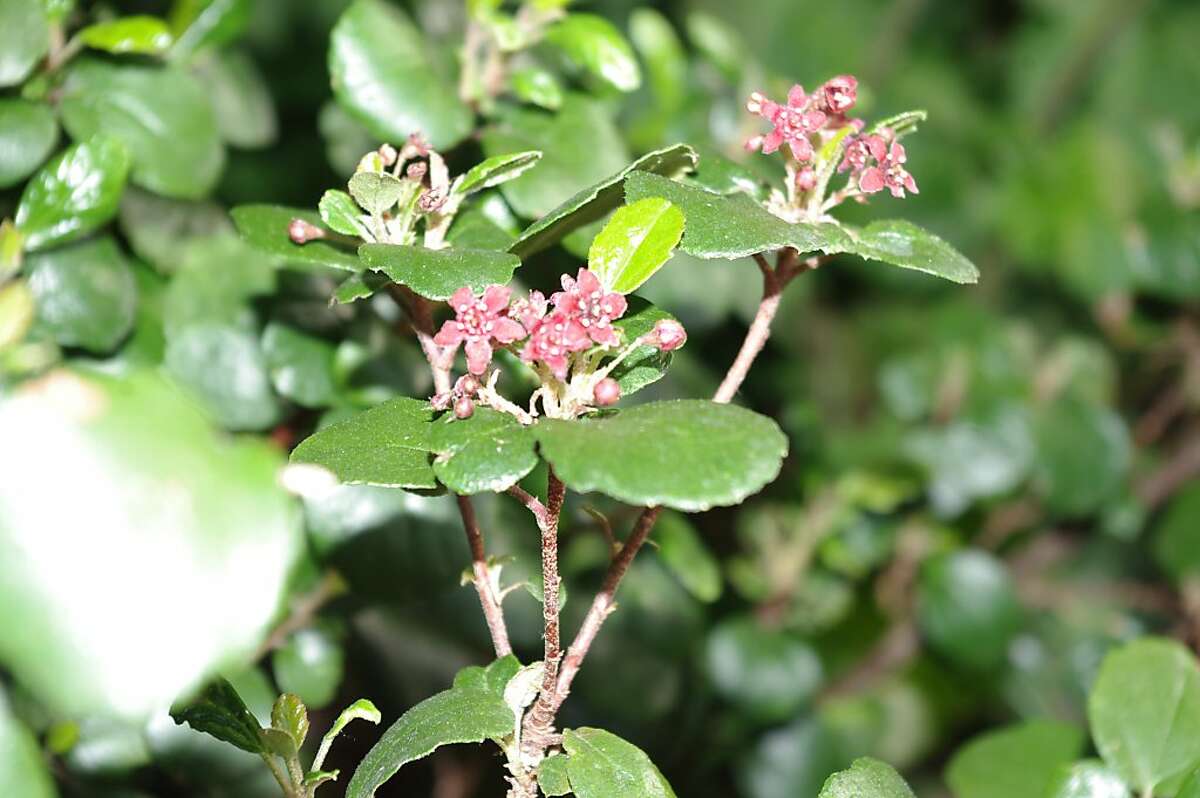Ribes viburnifolium, the Catalina currant, offers year-round beauty with its glossy evergreen foliage and reddish arching stems, making it an ideal choice for drought-tolerant landscaping. Native to the Channel Islands and Baja California, this unique shrub thrives in coastal conditions and exudes a captivating citrus-scented sap from its leaves. Beyond its ornamental value, Ribes viburnifolium plays a vital ecological role in its native habitat, providing shelter and sustenance to local wildlife. With its low-maintenance nature and striking aesthetic appeal, Ribes viburnifolium is a rewarding addition to any garden, adding a touch of wild beauty to cultivated spaces.
Exploring the Catalina Currant: Origins and Characteristics
This captivating plant, commonly known as the evergreen currant, hails from the Channel Islands and Baja California. Its origins suggest a natural resilience to coastal conditions, making it a tough and adaptable choice for gardens. As a member of the Grossulariaceae family (more commonly known as the gooseberry family), Ribes viburnifolium boasts a unique characteristic: gently crushing a leaf releases a refreshing, citrusy scent.
Botanical Description
- Scientific Name: Ribes viburnifolium
- Common Names: Catalina currant, Santa Catalina Island currant, island gooseberry, evergreen currant
- Family: Grossulariaceae (Gooseberry family)
- Growth Habit: Low-growing perennial shrub with long, reddish, horizontally spreading stems
- Leaves: Dark green, glossy upper surface; lighter green/yellowish, leathery underside; glands exuding citrus-scented sap
- Flowers: Red, appearing in short, erect racemes in April
- Fruit: Red berries
- Aroma: Leaves emit a turpentine-like scent when crushed (some may perceive it as citrusy)
Thriving in Your Garden: Cultivation and Care
Ribes viburnifolium isn’t a demanding plant. It thrives in well-drained soil and tolerates a range of light conditions, from full sun to partial shade. Its drought tolerance, once established, makes it a water-wise choice for low-maintenance gardens, especially in drier climates. This adaptability makes it an excellent choice for xeriscaping. Consider adding waxleaf ligustrum for a complementary evergreen shrub in your landscape.
Benefits Beyond Beauty: Ecological and Potential Uses
In its native regions, Ribes viburnifolium is a valuable asset to the local ecosystem, offering shelter and sustenance to wildlife. Its sticky leaf sap likely acts as a natural insect deterrent, while simultaneously attracting beneficial pollinators like bees and butterflies. Ongoing research suggests potential medicinal properties, although further studies are needed to confirm these possibilities. Some experts believe the plant may hold untapped potential for various applications, adding to its already significant value.
Size and Spread: Understanding Growth Habits
Mature Dimensions and Growth Patterns
Curious about how big a Catalina Currant gets? It typically reaches a height of 3-4 feet, with a spread of 6-12 feet. Its growth habit is characterized as open, wide-spreading, and often trailing or arching, making it a versatile choice for groundcover, slopes, retaining walls, borders, or even container gardening. Remember, these dimensions are averages; individual plant size can vary based on environmental factors. Some studies suggest even larger sizes are possible in exceptionally favorable conditions.
| Characteristic | Details |
|---|---|
| Mature Height | 3-4 feet |
| Mature Spread | 6-12 feet |
| Growth Habit | Open, wide-spreading, trailing |
| Ideal Light Conditions | Partial shade to part sun |
| Water Needs | Drought-tolerant once established |
Experiencing the Evergreen Currant: A Sensory Delight
Beyond its visual appeal, Ribes viburnifolium offers a sensory experience. Brushing against the foliage releases its distinctive aroma, described by some as citrusy, while others note a turpentine-like scent. The interplay of textures, the rustle of leaves in the breeze, and the vibrant green foliage create a captivating presence in the garden.
A Promising Future: Untapped Potential
Ribes viburnifolium is a plant with a promising future. Its drought tolerance makes it perfectly suited for water-wise gardening (xeriscaping), a practice gaining importance in our changing climate. Research continues to explore its potential uses, hinting at undiscovered benefits beyond the garden.
Embracing the Evergreen Gem: A Versatile Addition
Ribes viburnifolium, with its year-round beauty, low-maintenance nature, and ecological benefits, is a valuable addition to any garden. Whether used as a groundcover, border plant, or container specimen, this versatile shrub offers a captivating blend of aesthetics and practicality. Its drought tolerance, unique fragrance, and potential for future discoveries make it an enticing choice for gardeners seeking both beauty and sustainability.
- Unlock Water’s Symbolism: A Cross-Cultural Exploration - April 20, 2025
- Identify Black and White Snakes: Venomous or Harmless? - April 20, 2025
- Unlocking Potential: Origins High School’s NYC Story - April 20, 2025















